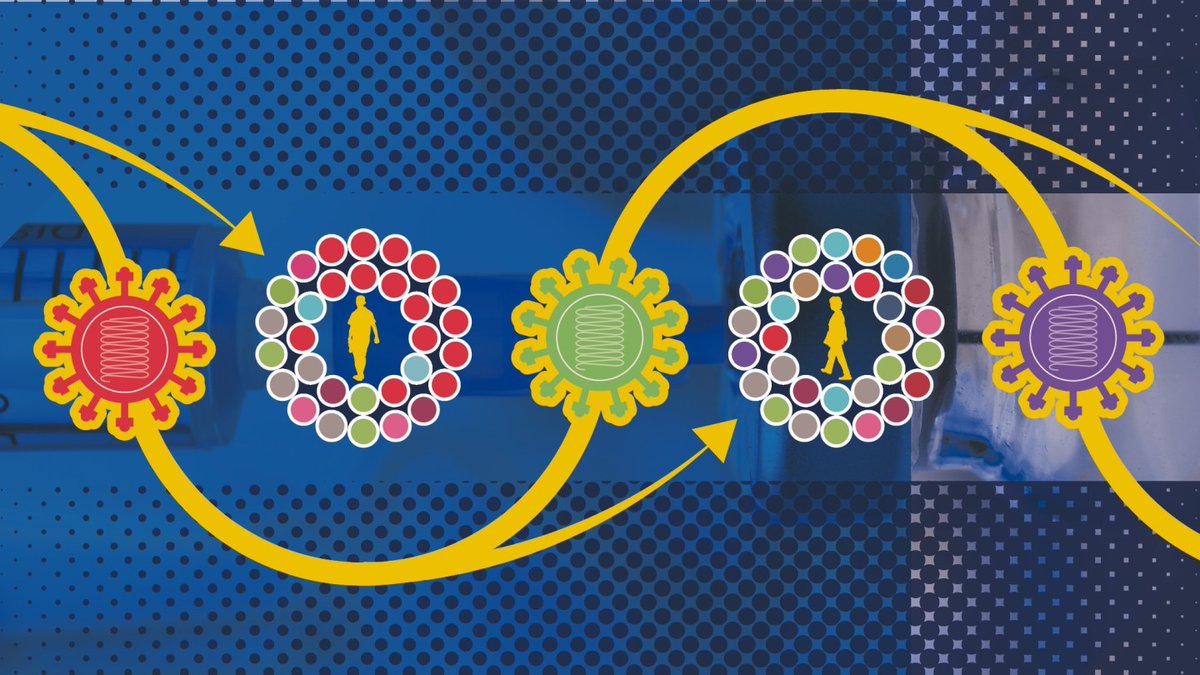2) In the first part, I posted the study by Carlo Brocha and his colleagues "Could SARS-CoV-2 Have Bacteriophage Behavior ..."
In 2001, Carlo gave an absolutely AMAZING INTERVIEW to an Italian newspaper.
(Big thanks to @popolux4)
affaritaliani.it/coronavirus/va…
In 2001, Carlo gave an absolutely AMAZING INTERVIEW to an Italian newspaper.
(Big thanks to @popolux4)
affaritaliani.it/coronavirus/va…
3) I can’t resist the pleasure of sharing a few excerpts from this interview 👇
Sars Cov 2 enters bacteria and this changes everything :
"Sars Cov 2 is also a bacteriophage virus. It means that it enters bacteria and replicates its RNA from there too."
Sars Cov 2 enters bacteria and this changes everything :
"Sars Cov 2 is also a bacteriophage virus. It means that it enters bacteria and replicates its RNA from there too."
4) "A virus normally attacks our cells, i.e. the epithelium and mucous membranes.
Try to enter and replicate and this induces an immune response in the host."
"In the case of a bacteriophage virus, it does not pass without interfacing first with the microbiome,
Try to enter and replicate and this induces an immune response in the host."
"In the case of a bacteriophage virus, it does not pass without interfacing first with the microbiome,
5) ... but also enters the bacteria."
"Since he is also a bacteriophage, one must accept the evidence that is everywhere. Colonize sewers, waters, seas."
"Contact and orofecal transmission represents another explanation for the continuous increases in positives."
"Since he is also a bacteriophage, one must accept the evidence that is everywhere. Colonize sewers, waters, seas."
"Contact and orofecal transmission represents another explanation for the continuous increases in positives."
6) "How many waves does it foresee? The bacteriophagic nature of the virus is not well inclined. We will have, perhaps, three a year with many mutations."
"We will also need a vaccine against the toxins that we have found and produce our bacteria ...
"We will also need a vaccine against the toxins that we have found and produce our bacteria ...
7) ... in a way very similar to the diphtheria mechanism."
I recommend his book which you can buy online.
Thanks for reading 🙏
FYI
@DavidJoffe64 @LauraMiers @HarrySpoelstra @MeetJess
@RadCentrism @C_A_Gustave @arijitchakrav @mrmickme @outbreakupdates @1goodtern
@xabitron1
I recommend his book which you can buy online.
Thanks for reading 🙏
FYI
@DavidJoffe64 @LauraMiers @HarrySpoelstra @MeetJess
@RadCentrism @C_A_Gustave @arijitchakrav @mrmickme @outbreakupdates @1goodtern
@xabitron1
• • •
Missing some Tweet in this thread? You can try to
force a refresh

 Read on Twitter
Read on Twitter



















